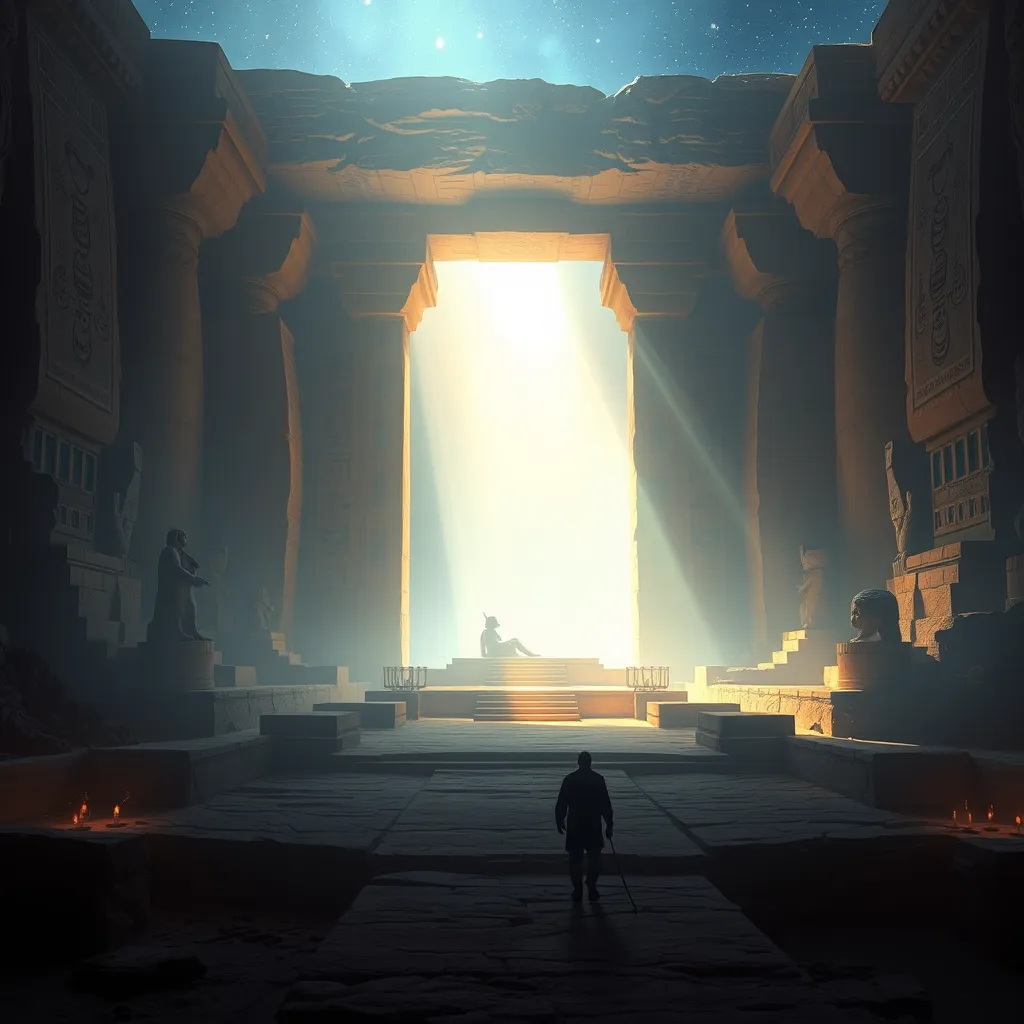The Duat: A Realm of Eternal Light and Shadows
I. Introduction
The Duat, as depicted in ancient Egyptian mythology, represents a complex and multifaceted realm that serves as the afterlife destination for souls. It is a place where the dichotomy of light and darkness plays a critical role in the journey of the deceased, reflecting the ancient Egyptians’ beliefs about life, death, and rebirth. Understanding the Duat is crucial as it encapsulates the essence of ancient Egyptian spirituality and the values they held regarding the afterlife.
This article will explore the historical context, geography, deities, the journey of the soul, symbolism, and modern interpretations of the Duat. Each section will provide insight into how this realm shaped the beliefs and practices of ancient Egyptians and its lasting impact on contemporary culture.
II. Historical Context of the Duat
The concept of the Duat has its roots in the early dynastic period of ancient Egypt and evolved significantly over time. Initially, it was simply viewed as a dark, underworld realm, but as Egyptian theology developed, the Duat became more intricate, embodying a landscape where the dead would navigate through various challenges to reach the afterlife.
Funerary texts, such as the Pyramid Texts and the Book of the Dead, played a pivotal role in elucidating the significance of the Duat. These texts provided guidance and spells to assist the deceased in their journey, ensuring safe passage through the various trials they would encounter.
Archaeological findings, including tomb paintings and inscriptions, have revealed much about the Duat. These artifacts depict scenes of the afterlife and the journey of the soul, illustrating the ancient Egyptians’ beliefs and the importance of the Duat in funerary practices.
III. The Geography of the Duat
The Duat is often described as a vast, surreal landscape filled with both light and darkness. It is a realm that is ever-changing, comprising various regions that are often depicted in Egyptian art and literature. The geography of the Duat can include:
- Rivers and lakes, symbolizing the passage of time and the flow of life.
- Deserts representing isolation and the challenges faced by souls.
- Forests filled with dangerous creatures, symbolizing the trials of the afterlife.
The interplay of light and darkness in the Duat symbolizes the duality of existence, where life and death coexist. The presence of light often signifies hope and rebirth, while darkness represents fear and the unknown.
Different regions within the Duat carry specific meanings, such as:
- The Field of Reeds, which symbolizes paradise and eternal life for those deemed worthy.
- The Hall of Judgment, where the deceased are weighed against the feather of Ma’at.
IV. Deities and Entities of the Duat
The Duat is inhabited by various deities and entities that play crucial roles in the afterlife journey. Major gods include:
- Osiris: The god of the afterlife, resurrection, and fertility, Osiris is the ruler of the Duat.
- Anubis: The god associated with mummification and the protection of graves, Anubis guides the souls through the Duat.
Additionally, other significant figures, such as Thoth, the god of wisdom, and Ma’at, the goddess of truth and justice, are integral to the judgment process. The guardians of the Duat, often depicted as ferocious beasts, serve to protect the realm and challenge the souls attempting to pass through.
V. The Journey Through the Duat
The journey through the Duat is fraught with trials and tribulations. The deceased must navigate various challenges, including:
- Encounters with monstrous beings that test their resolve.
- Crossing treacherous waters that symbolize the passage between life and death.
- Solving riddles and answering questions posed by deities.
One of the most significant moments in this journey is the Weighing of the Heart ceremony, where the heart of the deceased is weighed against the feather of Ma’at. This ceremony determines the soul’s worthiness and final destination:
- If the heart is lighter or equal to the feather, the soul may enter the Field of Reeds.
- If the heart is heavier, it is devoured by Ammit, the devourer of the dead.
VI. Symbolism and Themes in the Duat
The Duat is rich in symbolism, particularly in its representation of light and shadow. This interplay serves as a metaphor for the cycle of life and death, where:
- Light symbolizes hope, renewal, and the afterlife.
- Darkness represents the unknown, fear of death, and the trials that must be faced.
Transformation and rebirth are central themes within the Duat. The journey through this realm is seen as a process of purification, allowing the soul to shed the burdens of earthly life and emerge anew.
Morality and judgment play a crucial role in the experiences of souls within the Duat, emphasizing the ancient Egyptians’ belief in living a just and moral life to achieve eternal peace.
VII. The Duat in Modern Culture
The Duat has found its way into various aspects of modern culture, inspiring literature, art, and media. For instance:
- The Duat is often referenced in novels and movies that explore themes of the afterlife and ancient mythology.
- Artists draw upon the rich imagery of the Duat to convey concepts of life, death, and rebirth in contemporary works.
Moreover, there has been a resurgence of interest in ancient Egyptian mythology, with many contemporary spiritual practices incorporating elements of Duat. This reflects a broader fascination with the mysteries of the afterlife and the human experience.
VIII. Conclusion
The Duat holds a significant place in ancient Egyptian culture, representing not only the afterlife but also the profound themes of light, darkness, morality, and rebirth. Its rich symbolism and complex mythology continue to resonate with people today, reminding us of the eternal human quest for understanding life and death.
As we reflect on the Duat’s enduring legacy, it invites us to explore the dualities within our own lives—light and shadow, hope and fear—as we navigate our journeys through existence.




